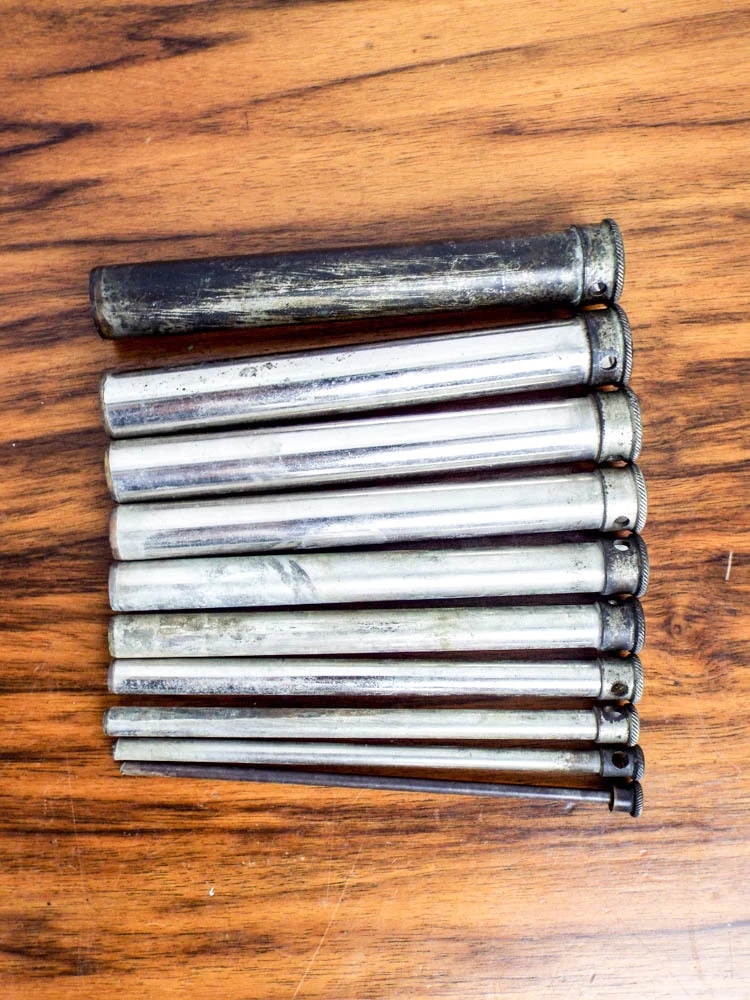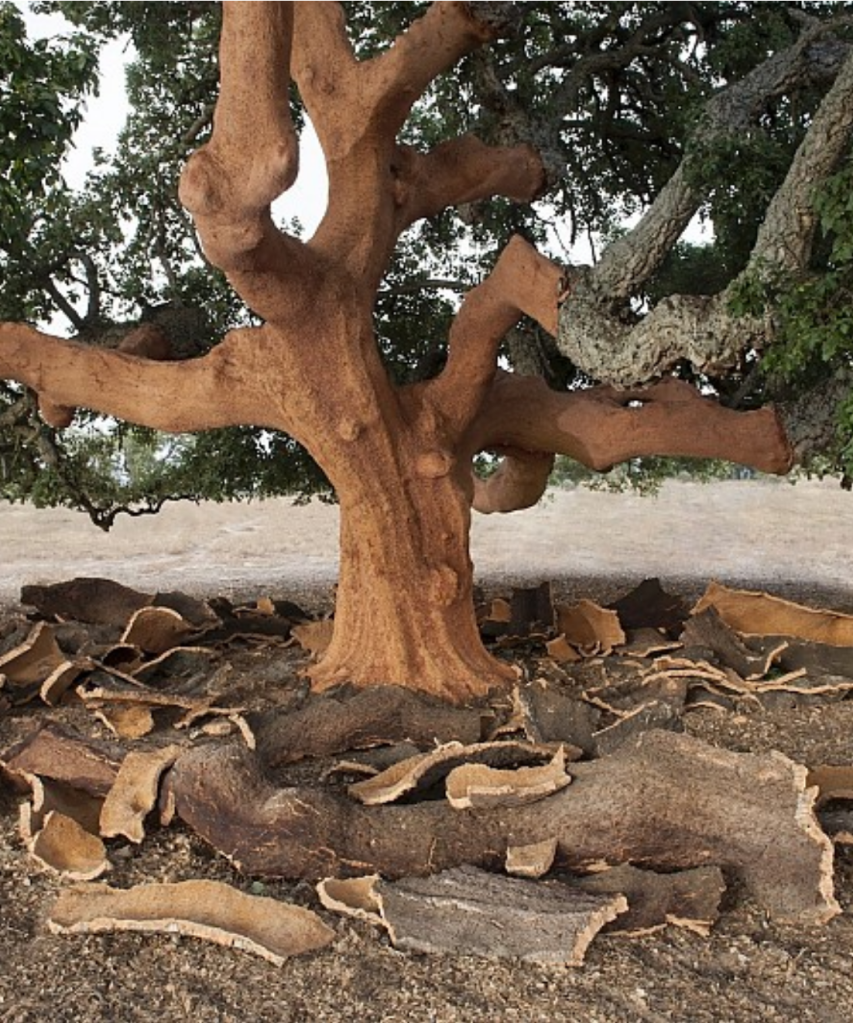I’ve been trying to remember when the first screw-top caps for wine bottles came in. First there were rigid plastic ‘corks’, and then aluminium screw-caps – sometimes even for wines which in our rather lowly circle might be described as posh.
I see from websites which are trying to sell me screw caps that ‘Screw caps can insulate wine better than corks, preventing the risk of cork taint which can spoil wine. [See below.] They also work better at keeping oxygen out which can speed up the aging process.’ Is this true, or should we be sticking to the traditional method, and preserving the cork oak (Quercus suber) in the fields of Portugal, Spain, and the western Mediterranean coast? I dimly remember reading many years ago a plan to replace cork oaks with eucalyptus in Portugal – an effort which turned disastrous when fires broke out and the easily flammable eucalyptus were destroyed, taking some of the ancient oaks with them.

According to the World Wildlife Fund, ‘Cork oak forests rank among the top biodiversity hotspots in the Mediterranean and in Europe. At the same time, they are the backbone of an entire economy.’
Corks have been used as stoppers for wine bottles since the middle of the seventeenth century, before which, apparently, oil-soaked cloths were used. One legend has it that the inventor of the cork was none other than Dom Pierre Pérignon (1638–1715), the Benedictine monk who is also credited with inventing champagne – though apparently this was a later embroidery on the tale of his life, designed to advertise the product which was becoming increasingly important to the church finances.
But how does the bark of an oak tree get harvested without destroying the tree? It appears that Quercus suber has the unique quality that, provided it is not stripped too often, it will regrow: every seven years appears to be the normal interval for harvesting.
The website of Amorin Cork of Portugal has a useful illustrated article showing the modern process, and a site called wineanorak.com, citing Amorin as its main source, shows how sheets of bark not thick enough to make a conventionally-sized cork can be ground down to dust, reconstituted with glue, and shaped in a tube before being cut to appropriate lengths.
It has been less easy to find how corks were made before modern factory processes. Presumably the harvesting, boiling of the bark and cutting it into sensible sizes was part of the process, and it seems that an iron frame holding a ratchet which twisted a sharp-edged tube through the cork was the normal piece of kit, though some cork-cutters appear to have had handles at the top so that they could be twisted in by hand.

Most corks were cut into a straight tube shape, inserted into the bottle with a pressing machine, and of course rendered useless after being removed with the aid of a corkscrew.

However, from the nineteenth century onwards, some corks were deliberately tapered and topped with a decorative hand-grip, so that they could be reused.
Wine-bottle corks could also be shaved down after use and made into smaller stoppers to be used by apothecaries – compression resealed the hole made by the corkscrew.
Famously, the use of corks to seal wine bottles is not foolproof: ‘corked wine’ is a thing, though it doesn’t in fact refer to a bottle with tiny pieces of cork in it but to a taint in the taste, caused by a chemical compound called TCA (2,4,6 – trichloroanisole), which is formed when natural cork fungi come in contact with certain chlorides found in bleaches and other winery sanitation / sterilization products. If a winery uses infected corks, the wine becomes tainted. (I owe this useful information to The Kitchn.) Is the possibility of taint from corks one of the reasons for the proliferation of screw-tops?
Ground-down cork can be recycled into many things, not least cork pinboards, and those little coasters which everyone seemed to use in the 1960s, as well of course as beer mats.
But of course, for any gardener the main function of used corks is to sit at the bottom of a flower pot, to assist drainage. I am slightly embarrassed to confess that although I had run out of corks for this purpose a month ago, after a full-on family Christmas I now have more than the storage pot will contain.
A Happy New Year and a healthy and prosperous 2024 to you all!
Caroline












Thanks as always and Happy New Year.
LikeLiked by 1 person
I am happy to report that I live in France, and the dreadful screw-top only appears on the cheapest, mass-market, bottle of plonk here, and also in Italy and Spain. Cork still reigns supreme among European wines. It is the job of every Frenchman to be a skilled extractor, and also able to open champagne without explosive bangs or over-flowing bottles. A Frenchwoman never, ever, opens the bottles.
I traveled through the cork-growing region of Portugal one autumn, and the landscape is strikingly beautiful. I wish I could attach a picture. There are wild trees that are harvested too, but most of it is cultivated, and fire is much more of a danger to biodiversity in the region that cork-harvesting. Because of the low rainfall, the trees are planted at wide intervals across rolling hills, on which wheat is grown. In autumn, the near-black trees against the golden stubble, under a deep blue sky, is beyond words. Enhanced even more by the shepherds who bring their flocks down from the mountains to graze on the stubble and fallen seed heads. Working with dogs, and with bells on the lead sheep, it was an experience etched into my brain.
As for gardeners using cork, surely the main use is among orchid growers, as the normal mounting for epiphytic orchids? Since I am in southern France, my selection of epiphytes (selected for good cold tolerance) grow directly on the trees (which aren’t cork oaks), their roots spreading out happily, as long as they get a daily spraying during the warmer months.
LikeLiked by 1 person
This is fascinating: thanks so much! I’ve been to Portugal twice, but only in cities. I’m afraid I’m not very good at orchids …
LikeLike
I pity any Frenchwoman who doesn’t happen to have a chap about when she wants a glass of wine, then.
LikeLike
Ha, very true!! Feminism is not very far advanced in France, I am afraid. Now in the privacy of your home, or among a group of just women, I suspect they are completely competent. But who would know? Not me, because when I step through the door at a gathering, and I am the only or primary male, the bottle is thrust into my hands before I can even get my coat off!!
LikeLike
Thanks from a fan in Peekskill, New York.
LikeLike
Thank you so much!
LikeLike